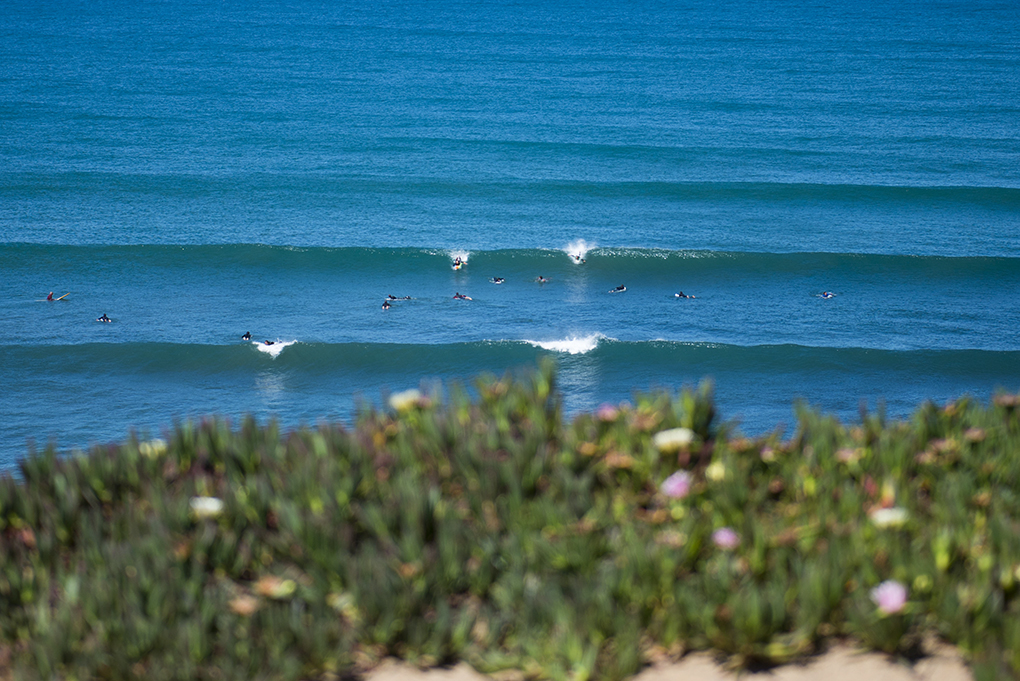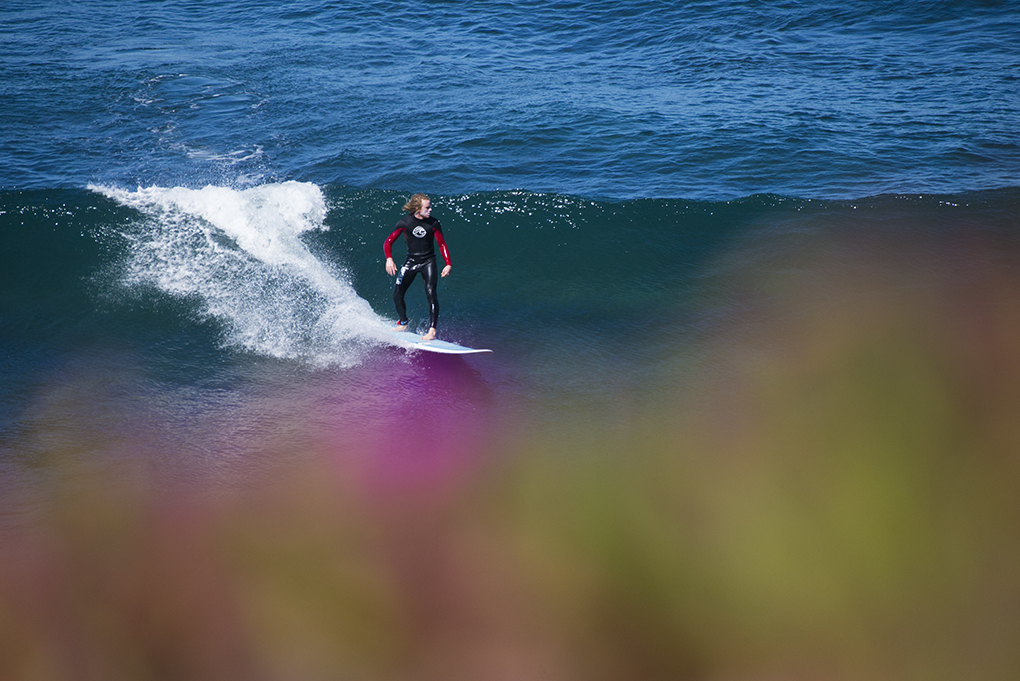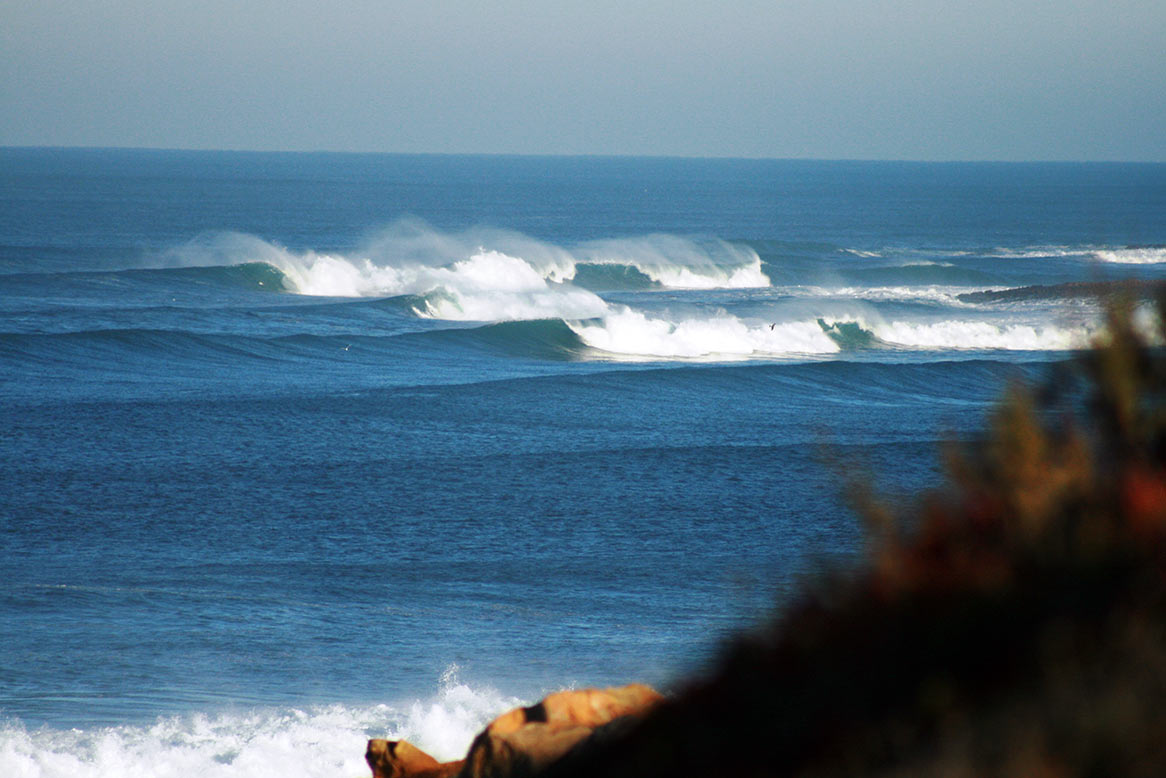Ericeira Surf Breaks
The Beach Breaks
São Julião and e Foz do Lizandro, are two large beaches of clear sand where small peaks form and reform, according to changes on the existing sand banks, mostly provoked by the flow rate variations on the small rivers that recede in both places.
While the sands of São Julião are crossed by a small stream that marks the limits of Sintra and Mafra Municipal Councils, to the north of Lizandro River one can find the biggest sandy beach of the region, giving welcome to any visitor that approaches Ericeira World Surfing Reserve from south.
Back in time, Lizandro river was used by the Roman Galleys, impelled by a great number of slave rowers, to sail up to the site actually known as Senhora do Ó, and load the marble stones from Pero Pinheiro’s quarries. Also, more recently, as a place for picnics and romantic rowing tours for the 40’s and 50’s youth of Ericeira. Today it does little more than feeding the sand dunes from the beach that adopted its name, which was recently reformed to meet the new tendencies, totally committed to the tourism and Surfing.
São Julião also has its history. Its importance for men dates back to 9000 years ago.
At the end of the last ice age, the climate conditions have brought in abundant banks of mollusks, found and explored by groups of nomads, hunters and collectors, occasionally camping in that area.
Coxos
Surfing this spot is, still today, quite a mission for most surfers.
Years ago, In a time when it was not usual to use leg rope, just because there weren’t any available, surfers had to wait for the right conditions, use improvised nylon leashes and find friendly spots to get in and out of the water without ‘loading’ their feet with the inevitable sea urchins.
Some of the very first surfers on the bay, Bruce Palmer and the late Peter “Chops” Lashels (Beach beat Surfboards) use to camp right on the water edge, struggling with the lack of places to get food supplies, and specially money on the Portuguese old currency, Escudos.
An episode worth remembering happened back in 1974 when Peter Lashels had to travel all the way to Lisbon to find a bank where he could exchange British pounds. Funny or not, in that April morning, Peter left behind the quiet lawn of Coxos to enter the up side down city of Lisbon in the very same day the tanks and troops took down the fascist regimen that ruled Portugal for the past 58 years. It was the 25th and that was the day of the Revolution.
Until the final years of that decade, the bay was a well-kept secret, followed by a period of slow exploration by a second generation of Portuguese surfers like our host and Surf teacher Miguel Ruivo one of the top performers on that wave to these day, breaking ground for newer generations.
They were the ones that, through continued determination, plenty of broken boards, consistent dawn patrols, hazardous rocks covered by sea urchins, wave after wave, session after session, year after year, opened the doors for everyone to test physical and Surf ability at this surf spot, today considered, by far, the best in Europe.
Ribeira D’ilhas
Ribeira d’Ilhas is one of the many spectacular beaches known worldwide for excellent surfing conditions, safe from pollution and surrounded by huge cliffs at north and south, exposing several interesting geologic phenomenons that result from compressions and distensions once occurred in the lithosphere.
Over the long flat reefs that emerge on the lower tides, rolls a no less long righthander, very consistent and perfect with whatever swell direction it embraces, and specially perfect under the action of mild easterly winds.
When the predominant northwest wind blows, spoiling the majority of the peripheral waves, Ribeira keeps its quality intact and, probably for that reason, has been chosen to be the stage of many regional, national and international competitions.
Although there are other excellent waves nearby, north and south, within or outside the limits of the World Surfing Reserve, Ribeira has always been the Portuguese business card for the surfing-related touristic offer.
Pedra Branca & Reef
Approaching the Cliff of Empa beach, you will find a very small bay of sand and rocks, with two incredible waves on the north side, Reef and Backdoor, and a perfect left-hander on the south end, elevating that little place to the condition of a natural asset of immeasurable value.
Back in the 1970’s, this small deserted beach, many times only holding little sand because of the work of tides, would not be noted by the occasional surfers. This extraordinary lefthander works best when tides are too high to surf the reefs on the north side of the beach.
A big white coloured rock, full of sea urchins where you can touch while sitting on the surfboard waiting for waves, marks with accuracy the exact place where the wave sends its lip forward, initiating another incredible ride of tubes and turns all the way to the grey reef that grows from the beach.
Possibly because surfers’ don´t often refer to their cult sites by its name, preferring to use references to the wave out of their particular dialect, this place was spontaneously re-baptized.
Today, the wave is known all around the world for its perfection and intensity, but everybody calls it “Pedra branca” (White rock).
Praia Do Sul
Right in the heart of the Village, Praia do Sul was in the near past the preferred beach destination of influent people of Portuguese Monarchy.
The permanent waves breaking on the beach, the beautiful sunsets on a frequently clear sky and incredible lights of the village will make your experience in this village endure in your memory.
At Laneez Ericeira Surf house, from the balcony over Praia do Sul, or even from your bedroom window, you can watch some of the best waves breaking over several reefs, unusually uncrowded. Right-handers like Furnas and Pico do Futuro, or the left-handers on the south side of the bay will amaze you every day you spend at Laneez Ericeira surf house.
Other Spots
São Julião and e Foz do Lizandro, are two large beaches of clear sand where small peaks form and reform, according to changes on the existing sand banks, mostly provoked by the flow rate variations on the small rivers that recede in both places.
While the sands of São Julião are crossed by a small stream that marks the limits of Sintra and Mafra Municipal Councils, to the north of Lizandro River one can find the biggest sandy beach of the region, giving welcome to any visitor that approaches Ericeira World Surfing Reserve from south.
Back in time, Lizandro river was used by the Roman Galleys, impelled by a great number of slave rowers, to sail up to the site actually known as Senhora do Ó, and load the marble stones from Pero Pinheiro’s quarries, or more recently, as a place for picnics and romantic rowing tours for the 40’s and 50’s youth of Ericeira. Today it does little more than feeding the sand dunes from the beach that adopted its name.
São Julião also has its history. Its importance for men dates back to 9000 years ago.
At the end of the last ice age, the climate conditions have brought in abundant banks of mollusks, found and explored by groups of nomads, hunters and collectors, occasionally camping in that area.
Remains of these ancient occupations, right on the beach we know today, have been revealed since 1999 as a result of archaeological work that has identified these seafood cooking structures.
Nowadays, seafood can be consumed at the comfort of any esplanade, observing the progression of surfers that graciously ride the waves that approach and break on these beautiful sandy beaches.


















































